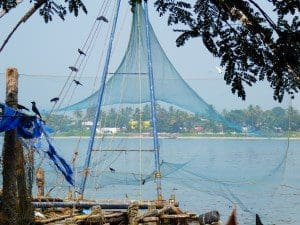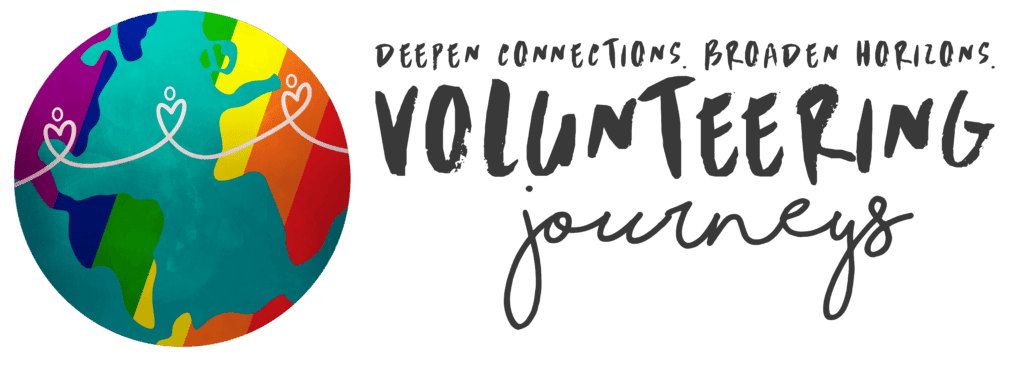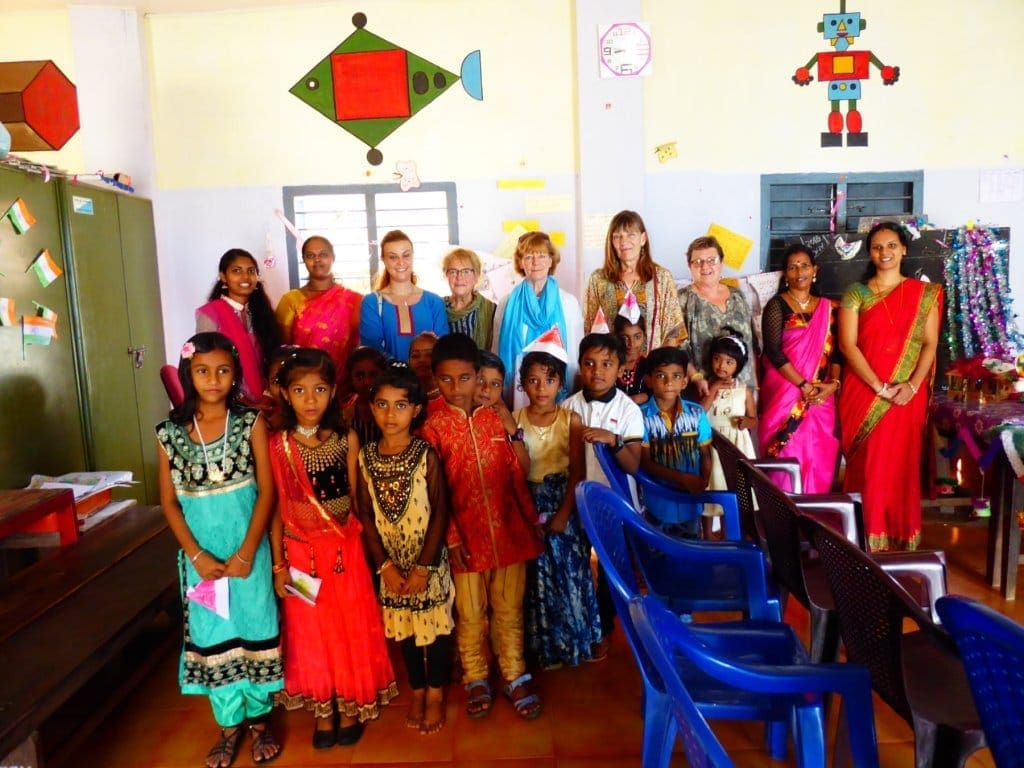Well, I made it — through sheer determination, but I got there. I had been so excited by the idea, the commitment to and the preparation for this trip….. I had been dreaming of the warmth in the air and the people, reading everything I could about Kerala’s geography, economy, politics and religion to imbue myself with a sense of the place I would be visiting; I secured the documents I needed to enter the country, chose my seats on various aircraft, endured several injections in both arms, researched remedies for the dreaded diarrhoea I was sure I would catch, chose and changed my wardrobe several times………… I was ready.
But despite all my best efforts to stay healthy for the BIG TRIP, I succumbed to someone’s germs on the Monday before my flight and was pretty poorly by Wednesday. On Thursday I really didn’t feel like getting up at all – it didn’t seem worth making the bed when all I really wanted to do was crawl back in it. However, I managed to get to the airport on Friday and then just did what the system is designed to make us all do — queue, sit, queue, sit some more, queue, queue, queue. I felt well enough during my layover in Dubai to try a glass of Chablis and some prawn cocktail at vast expense (if you’re going to go, why not do it in style?) so must have been getting better by then, although I was a bit horrified to hear all the hacking coughs and honking sniffles around me on the plane to Cochin.
However, we duly arrived at Cochin Airport where the first task was to trade in the e-visa I had obtained online for an official stamp in my passport. There is a side office dedicated to this purpose, but when I arrived it had not yet been staffed up for the number of people on my flight who all needed to be processed. In what I would soon recognise as Indian efficiency and hospitality, the office was well furnished with a random assortment of easy chairs on which we were rather forcefully encouraged to sit while the additional staff members got set up. This caused great consternation amongst the British passengers – queuing is an art form for us, and the randomness of the seating made it almost impossible to establish and maintain your position in the queue!
By the time I retrieved my luggage I was operating on auto-pilot, having been ‘in transit’ for nearly 20 hours; next step, queue through customs and wander out into the arrivals hall to see what challenges lay ahead. What greeted me was the sight of a man holding a placard with my name written in large bold letters – I nearly wept with gratitude! He grabbed my case and marched off towards the car park with such a sense of purpose that I followed meekly behind. This was one of our drivers, and although I struggled to understand his English, we kept up a lively conversation on the 1.5 hour journey to the House. I even received my first phone call!! Programme director Geetha Raj makes it a point to ring every volunteer on their journey in to Fort Kochi just to make them feel welcome – evidence of the staff commitment that would be the making of every volunteer’s experience in the programme.
I arrived at the House (which is basic but clean and comfortable — perfect for purpose) around noon local time. I was given a respectable 45 minutes for a rest and then we all went out to the bank to change money. In an effort to regain control of India’s economy, Prime Minister Modhi had withdrawn all old 500 and 1000 rupee notes from circulation the previous month, and the banks had to record every new note that is now issued. The deadline for changing all old notes was coming up fast, so obtaining cash was a struggle for locals and tourists alike.
The banks were trying hard to accommodate tourists, for obvious reasons, so we were ushered in to the inner sanctum and given priority – all of which felt a little unfair given the length of the queues in the local’s section. However, we did not turn the offer down and became quite bold at marching to the front of the queue by the end of our stay. Even so, we often had waits of an hour or so to change our money, and there was a daily limit at each bank of £100 (8,000 rupees). One of our group, a girl from South Africa, had not brought much cash with her, intending to rely on ATM’s for accessing her money. The problem was that the ATM’s imposed a limit of 2,000 rupees per withdrawal and they generally ran out of cash by late afternoon. It became a joke for the volunteers that we could not pass an ATM without stopping while Claire checked to see if it would work for her (it generally didn’t).
Those of us who were going to do yoga during our stay were shown the venue, which was an Ayurvedic centre just down the street from our House and while we were looking around I managed to book in an Ayurvedic massage for later in the afternoon. I assure you there is no way you could suffer from DVT or any other long distance traveller’s complaint after one of those — it was fierce!– but I slept like a baby that night.
Day two – Geetha shows us around
There were five people joining the volunteer team that weekend: a young medical student from San Francisco, a retired civil servant/carpenter/political activist from the West Country, a young family law solicitor from South Africa, a retired social worker from the Peak District, and me – semi-retired consultant/writer. We all met on the roof terrace on Sunday morning for our programme induction with Geetha. I was very impressed with the quality of the presentation and the thoroughness of her approach. We were all asked to sign the usual disclaimers and consents, and then we were bundled into two tuk-tuks for a whistle-stop tour of Fort Kochi.
As an aside, the vehicles we all refer to as tuk-tuks are actually called auto-rickshaws by the local population. They are a very practical mashup of a motorcycle with a seating area behind that should accommodate three people but has been seen to carry seven! The single front wheel makes them incredibly nimble, which is an important feature in the chaotic traffic around India. They are cheap, quick and probably safer than walking, so we got used to hailing them whenever we needed to get around.
To be honest, in the entire two weeks that I was there I never really got my bearings, but the tuk-tuk drivers always knew where you wanted to go and we quickly learned how to negotiate a realistic price. The favourite shopping and eating district was a twenty rupee ride away (a 15 minute walk), so the drivers who tried to charge 50 or even 80 rupees were given short shrift. Sometimes I had to shake myself and remember that 80 rupees is actually £1. We often found ourselves arguing over the princely sum of 50 pence!
 Our tour that day took in a local temple, the harbour with its famous Chinese fishing nets, the old Dutch laundry which still uses traditional methods, the Portuguese Museum and the obligatory government shop for ‘quality’ tourist products, e.g. clothing, jewellery, carvings and rugs. Two of us bought some clothing (I got my first pair of baggy trousers!) and Raj was very interested in purchasing a carpet for his brother back in San Francisco – he was given the royal treatment as you can imagine.
Our tour that day took in a local temple, the harbour with its famous Chinese fishing nets, the old Dutch laundry which still uses traditional methods, the Portuguese Museum and the obligatory government shop for ‘quality’ tourist products, e.g. clothing, jewellery, carvings and rugs. Two of us bought some clothing (I got my first pair of baggy trousers!) and Raj was very interested in purchasing a carpet for his brother back in San Francisco – he was given the royal treatment as you can imagine.
Geetha also took us to lunch at Krishna, a restaurant so ‘local’ that we stood out like the proverbial sore thumb in our foreignness. In an effort to blend in we all dutifully ate our food – which was delicious, by the way – with our hands. This is not as easy as it sounds – lunch consisted of dosa, a crepe like affair made from fermented rice, and two or three types of runny curried veg. Fortunately, every eatery in Kerala has a sink for hand-washing before and after you eat. I was carefully studying the locals to see if there is a consistent technique to eating things like steamed rice and curried vegetables without making a mess but came to the conclusion that there isn’t, hence the washing facilities which were used by everyone. They didn’t have facilities for drying your hands, and the provision of soap seemed to be optional, but at least there was (cold) running water.
The ambience at Krishna was definitely functional – grey painted concrete walls and low wattage neon lighting made it quite dull, with large bare tables and straight back chairs designed to get you in and out in a hurry. There is an interesting room to the side which we eventually figured out was the only place with air conditioning and as a result seemed to be used almost exclusively by the Muslim community who wear so much more in the way of heavy garments and therefore feel the heat even more than the rest of us. The food is the same for everyone – we enjoyed it so much we returned later during our stay without Geetha to chaperone us!
For dinner that evening we all went off to a restaurant called Fusion which was known to the one volunteer, a retired personal assistant from Ireland, who had been with the programme for a week already. Following another delicious meal we chose to walk back to the House to get a bit of exercise and then fell gratefully into our beds.
By this time I had been in Fort Kochi for something like 30 hours and already I was totally in love with the place. I wonder why I’ve left it so long to come to India, but of course I know the answer — if I had come earlier in my life it would have been as a tourist rather than in a way that would let me integrate a little more into the life of the place. What I can’t get over is the amazing vibrancy of everything — the life, the colour, the NOISE!! So different from the peace, quiet and hermit-like isolation I insist on at home, yet I’m thriving here.
Day three – the programme begins
Adrenalin is a wonderful thing. When your body really wants to wallow in the lassitude brought on by jetlag and sensory overload, it is the adrenalin that gets you up to join in the excitement of new experiences. That first Monday it was not easy to be up and ready for our inaugural yoga session at 7a.m. but we did it, and were so glad we did. The yoga classes were held on a roof terrace – in fact much of life in Fort Kochi is conducted on roof terraces designed to catch any stray breezes that happen to circulate in the super-heated air. Our terrace was atop a two storey house, at the level of the canopy of trees in the neighbourhood. By 7:30 the sun is just peeking through the branches of the trees and the birds are in full song. The effect was awesome – yoga to the sights and sounds of a city waking up.
Our yogi was a charming man – slight build but with a little pot belly peeking out from under his kurta. He had a lovely laid back approach and a charming sideways smile which always accompanied his catch phrase, “ahhh, you see, it’s possible!” In general, with reference to my flexibility, he was wrong – it is not possible for me to touch my toes or get my heels on the ground in downward dog. It never was: however, having done yoga regularly for over ten years I have quite strong abdominal muscles, so he often used me as the annoying example to hold up to my younger colleagues, as in “if she can do this, you should be able to!”.
We got back to the house just after 8a.m. and had an hour rest period before breakfast was served at 9. This being our first morning, Geetha introduced us to each of the projects. We all accompanied Raj, our medical student, as he was delivered to the hospital where he was going to shadow some of the doctors. We then visited the primary school where our volunteers help out with the younger and some disabled children, and ended up at the building where the women’s projects were running. After lunch, three of us returned to that building to do our first session with the women.
Volunteering is often a very unstructured business, which, by its nature throws together an odd assortment of generally strong personality types and asks them to make something happen. Working with children is easy in this respect – they will thrive on any contact you offer them. With the women there is more of a need to understand what they want as well as what they need to move forward. On that first day, three of us arrived to face nine women for two hours – with no real plan of what to do. Fortunately, one of the volunteers had come with a craft project and soon had all these lovely Keralan women covered in glue, glitter and stickers as they decorated white caps that had been purloined from a bakery in Derbyshire. Goodness knows what the women thought of this project and the stilted English our colleague spoke to them but it was a godsend for the rest of us as we had no other plans in place.
For the evening, Midhu had arranged tickets for us to attend a traditional Kathakali dance theatre. The dance started at 7pm but we are told to show up at 6 when the audience can watch the main character put on his make-up on stage. A couple of us had been out shopping in the afternoon and were running late, but our tuk-tuk driver assured us that we would be happy to be late to the make-up performance. He was so right – I’m guessing there is something terribly Zen about watching a man seated in lotus position apply green, red and yellow paints to his face for an hour but it was lost on us after the first five minutes. We took it in turns to escape and visit the art exhibition in some neighbouring buildings.
The dance itself was equally lost on us. It is meant to be very meaningful with intensely expressive hand and face gestures; body movements are minimal apart from advancing and retreating across the stage. The story is as stylised as the make-up and gestures: there seemed to be lots of to-ing and fro-ing, and then the main man drew his dagger and cut off the breasts of the female character. I’m not sure what that says about the modern day attitudes towards women in Kerala, but then again, British children grow up with the gender confusion of cross-dressing in the annual Christmas pantomime! All in all, I’m glad we saw it, but would not want to sit through another.
Home again to wash my face and remember to brush my teeth in bottled water. The last chore of the night is to wash my feet, a nightly routine that serves two purposes: firstly, it cools them down in a bid to reduce the heat-induced swelling. Secondly, it removes at least three layers of ground-in dirt from the soles of my feet. It is customary to leave your shoes outside the door of homes and many public buildings in India in a bid to keep the interior spaces clean. I have always loved going barefoot, so have no problem with this, but the problem is that there is a layer of dust and grime wherever you go – this is a dusty country. Unless you wash your floors hourly and have foot baths at the entrances to all buildings, your feet simply pick up and redistribute the dirt that inevitably accumulates; they are constantly covered in grime. Washing before bedtime saves on laundry bills.
Written by Shirley Redpath
Christmas doing Yoga and Volunteering in Kerala
17th December – 2nd January
Share this Post


